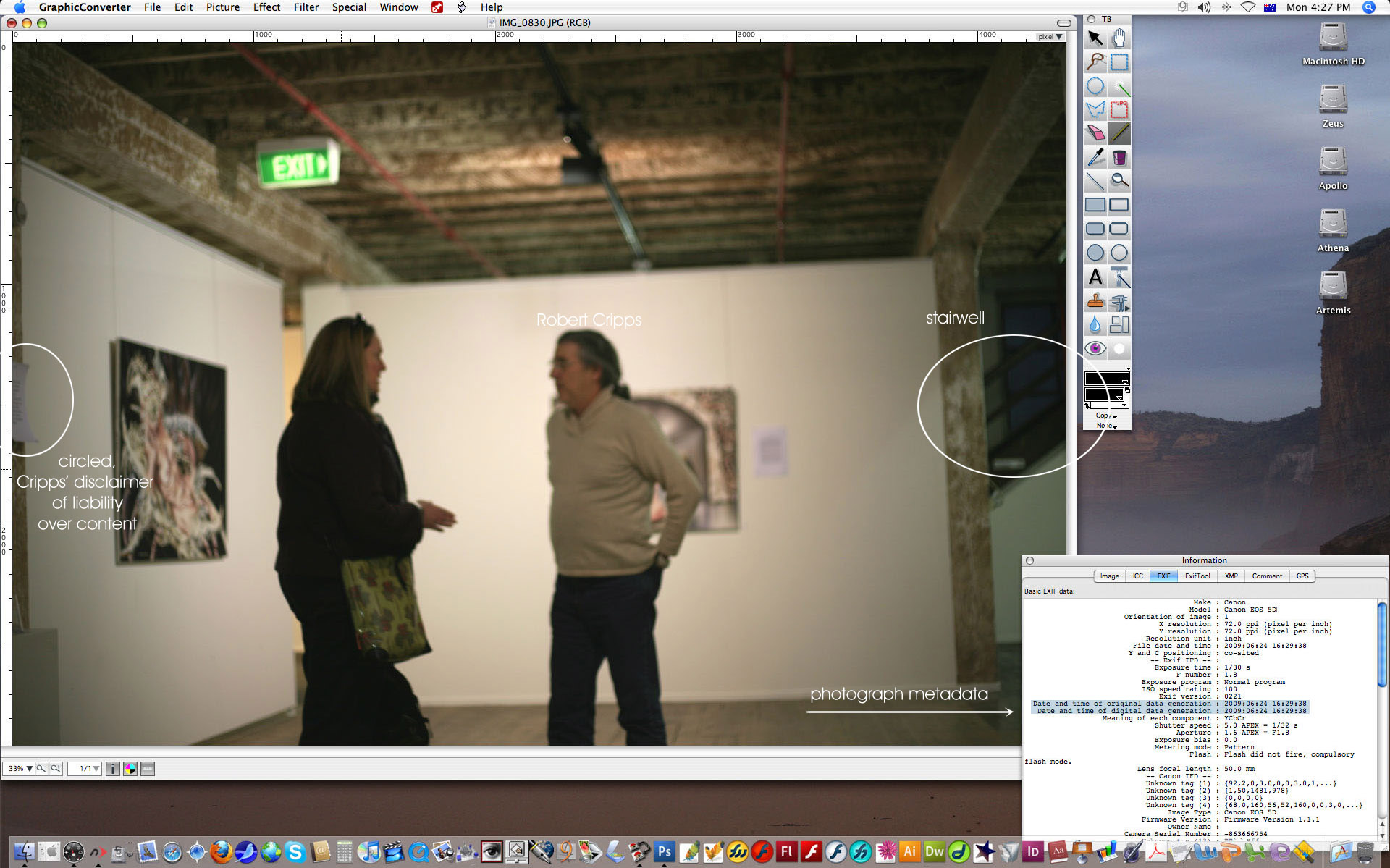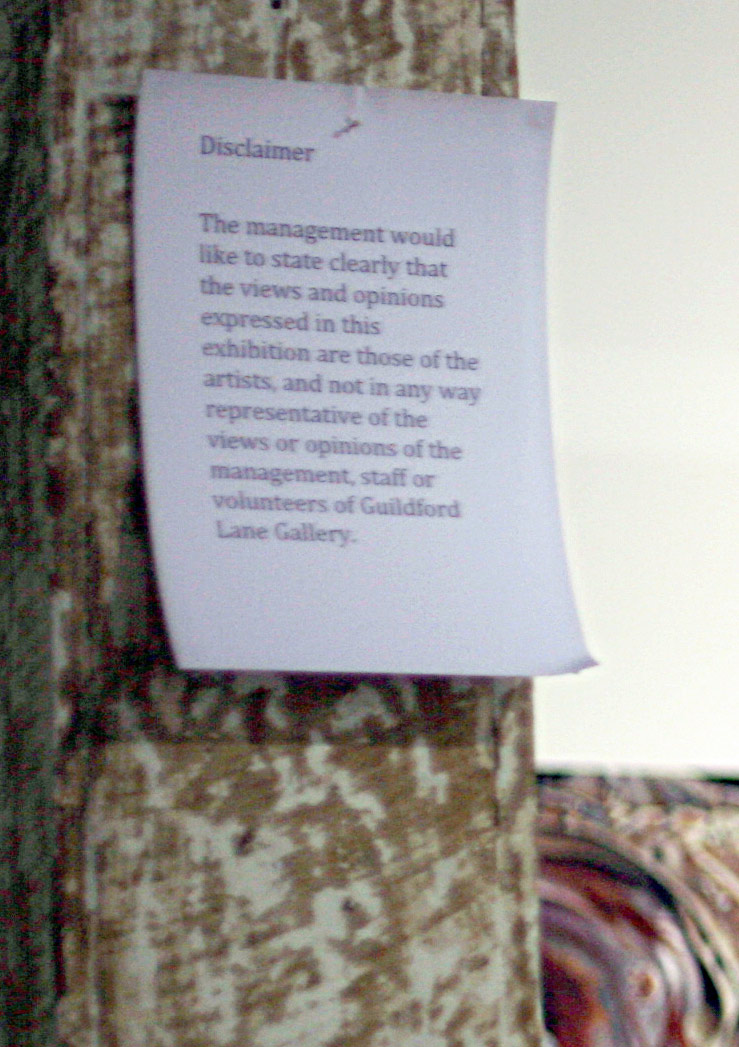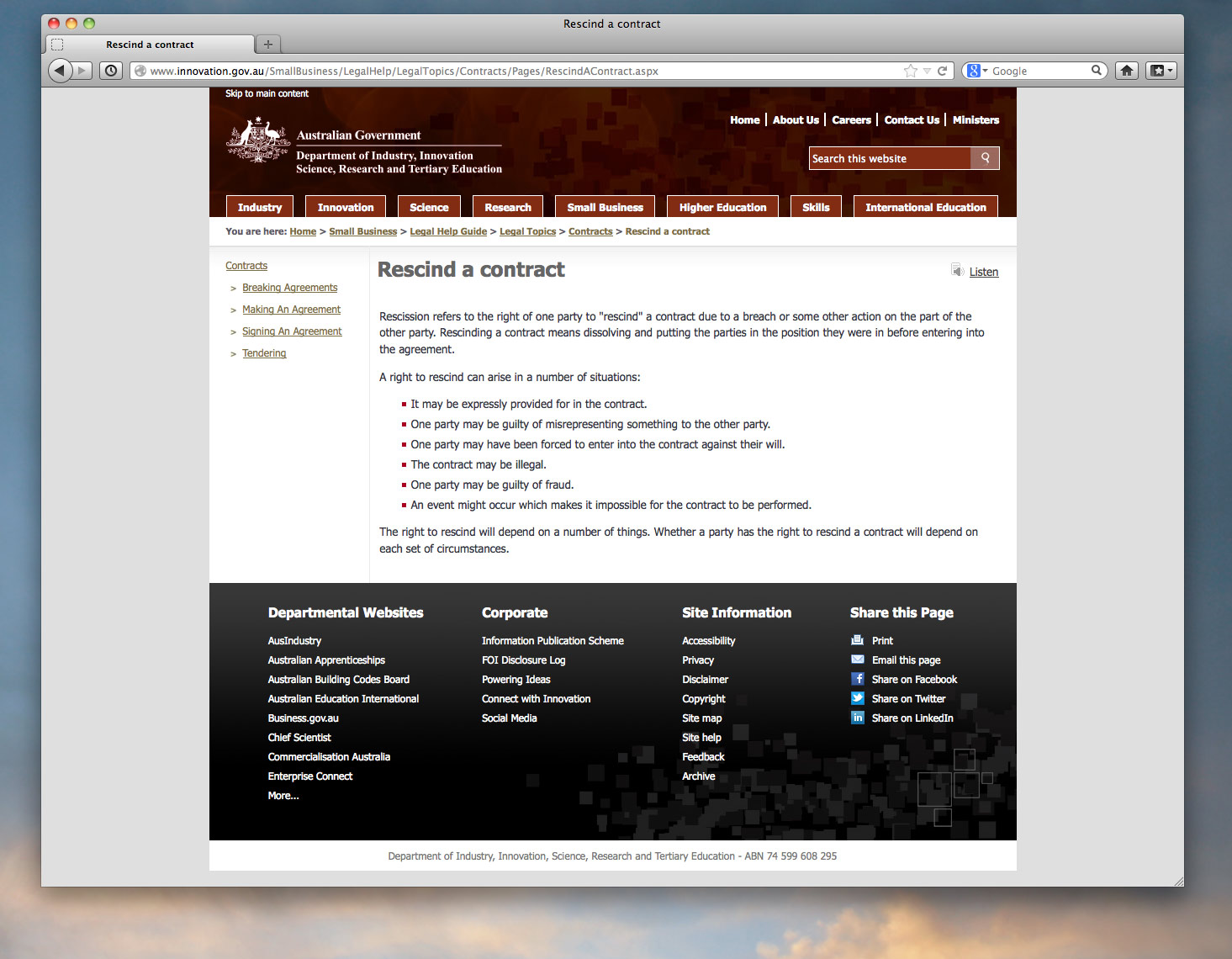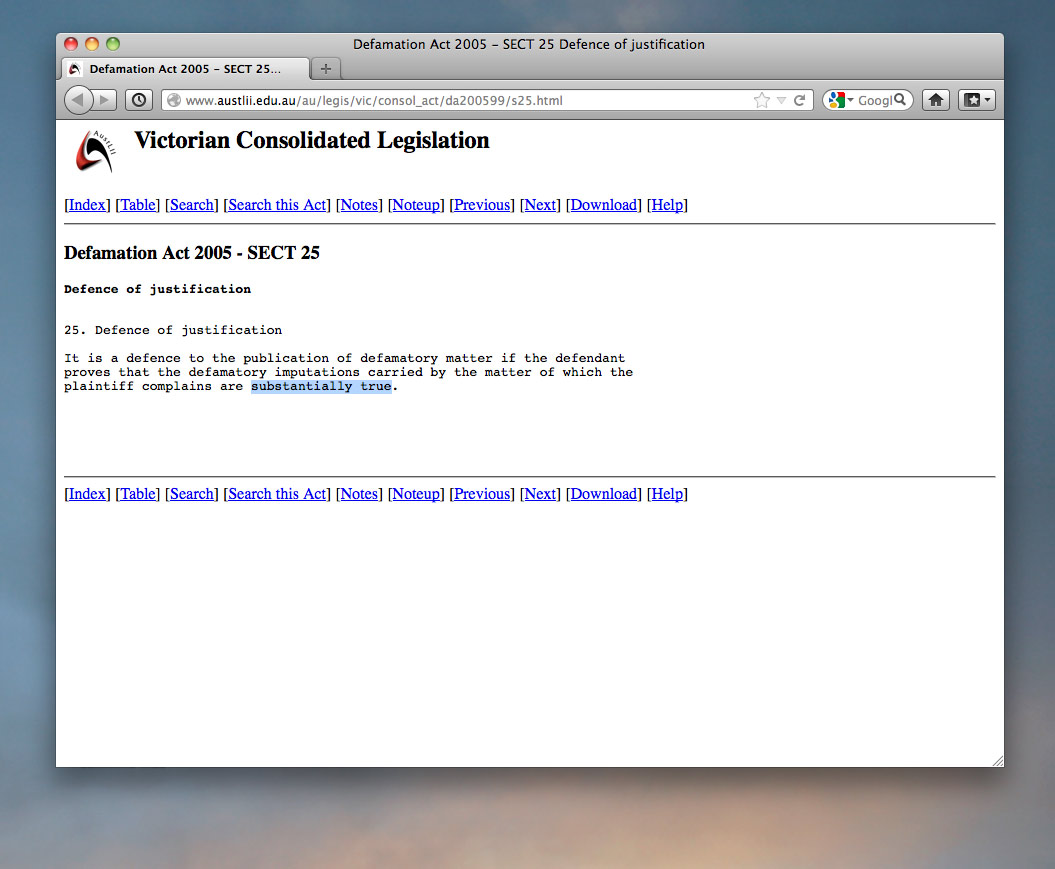Redleg V artists
Robert Raymond Cripps
sues artists for defamation:
Redleg Museum Services (ACN 105 986 829) sues
Demetrios
Vakras (artist)
Lee-Anne Raymond (artist)
Supreme
Court of Victoria
SCI 01484/2011
Cripps' legal team: Tao Jiang and Christopher Dibb
| 1.
Redleg Museum Services now runs RUBY'S MUSIC ROOM ,
Registration number: B2409701A,
ASIC; 2. Cripps' Redleg Museum Services Pty Ltd was the respondent to objections raised in VCAT regarding his Ruby's Music Room; 3."The team behind one of Melbourne’s much loved galleries and performance spaces, Guildford Lane Gallery are very proud to present Ruby’s Music Room." http://rubysmusicroom.tumblr.com Note: Redleg runs Ruby's Music Room, and in the past ran Guildford Lane Gallery. That is a simple fact. But to mention it, and make sure that we are not sued for some reason on grounds we are not aware of and have not anticipated, entails that we have to make "a bigger deal of it" than we otherwise would. It would have been simpler to just mention the fact, but by leaving it at that might be said to have been done by us out of "malice", or that it may have been wrong in fact; hence we need to show where the relationship lies between Redleg and Ruby's Music Room. Indeed, it becomes MANIFESTLY obvious that we could avoid mention of the fact and avoid any legal repercussions; self-censor; which is precisely the the outcome achieved by Australia's 2005 Defamation Act, though the act itself asserts categorically that it is not designed to "unreasonably" impinge on the right to freely impart (and receive) information (though not necessarily expressed by these exact words). |

|
Robert Raymond Cripps, now owner of " Ruby's Music Room ", a jazz music venue, is shown above. Lee-Anne
Raymond is protesting to Cripps about his bizarre
conduct during our exhibition at his failed Guildlford
Lane Gallery. Cripps is being told that his conduct
had been, and had continued to be, unacceptable. For
the purposes of suing us to make a profit from his
unprofessional conduct, Cripps has lied about this
encounter.
Cripps
has come to claim that he had to debar us access to
our own exhibition Humanist Transhumanist because of
some yet-to-be defined "behaviour" by Demetrios during
"heated exchanges" with him (Tao Jiang "Points of
Defence" 2012). Though in the Tao Jiang "Points of Defence" of 2012 Cripps only mentions "heated exchanges" with Demetrios, his email of 26 June 2009, sent to Lee-Anne Raymond, in which he directly addresses Lee-Anne, he writes: “If you wish to have any further discussion please write to me to prevent heated arguments causing further problems” The
"heated discussions" were
largely Cripps aggressively chastising
Lee-Anne. Lee-Anne, who is clearly present, is excised from Cripps' account of 2012 in order to deliberately "foster a misconception". Cripps is a liar (refer definition above). In
2009 Cripps insisted: The "heated exchanges" which Cripps claims occurred only between himself and Demetrios (as he claims in 2012) instead occurred between himself and Lee-Anne Raymond, whom he angrily called a "sarcastic woman". The
photograph above shows Lee-Anne arguing*(refer note
below) with Cripps. Leaning on Lee-Anne's leg is the
back-pack in which Demetrios brought in the tripod and
expensive camera to take the photographs on that day.
Lee-Anne kept Cripps preoccupied, arguing against his
claim of "racism", while Demetrios took the
photographs.
Cripps
called the work racist on 18/6/2009 and on 24/6/2009.
On 24/6/2009 he claimed that "racism" was the basis of: 1)
claiming that the contract was void (rescinded) 2) his seeking to have us removed for trespass; and 3) the reason for his posting of disclaimers (circled) to protect himself from liability (being sued) over the content which he called "racist" and "illegal". Cripps was seeking to to disassociate himself from our exhibition so that it would not be seen to be encouraging, authorising or assisting another person, us, and be made liable for a penalty, even though we advised him that he had no grounds to either do so or hold his belief. The law he was alluding to for the purpose of justifying his actions is below:
Cripps did not merely want it made known that he disendorsed our show with his disclaimers, but undertook deliberate actions to make certain that no one could make any mistake what-so-ever about his disendorsement of it; so that no-one could mistakenly believe that he had endorsed it by having allowed our works to remain hanging in his gallery. He demanded unilateral alterations to the contract, that we were not bound (contractually) to agree to, that were designed to keep us from entering the gallery for the purpose of making our capacity to support our show impossible simply so that he cannot have been accused of “supporting”, “authorising” or “assisting” us in any way. Having achieved the outcome he desired he claimed that it had been up to us to sell our works and that we had voluntarily "abandoned" an exhibition that we had worked on for for many years and that we had promoted extensively. Cripps'
actions employed circular reasoning
(a tautology) to justify rescinding of
the contract; by claiming that the show was
racist, which
he "proved" with his disclaimers, which gave
him "reason" to rescind the contract, which
he rescinded because it was racist, which
caused the disclaimers,
which proved the racism, which caused the
rescinding...
Cripps
never put his accusation of "racism" in writing, nor
did any of his staff corroborate that he called us
racist. Cripps' staff preferred, until recently, to
allow false claims that he made against us on their
behalf and in their names, stand. Cripps'
staff do not appear to have ever understood their
role, which they deliberately undertook, in this
affair.
Even though for Cripps the claim of "racism" was effective in keeping us out of his gallery; he did not put it in writing. This meant that we could not sue him for defaming us; but since admission to having called us "racist" would mean that we could sue him, it also meant that he would have to invent another reason in the future, or face being sued himself. In defending himself against our VCAT claim Cripps was compelled to offer a reason, other than the one that he provided us, for barring us entry and for the posting of disclaimers. He has submitted the following claim: 1)
Demetrios insisted that he had the right to come and
go as he pleased (Tao Jiang "Points of Defence"), as
if the entry had occurred, or was being sought, at
some ridiculous hour outside the gallery's
open-to-the-public hours; and 2) his disclaimers were necessary not because of our content, as the disclaimers themselves categorically stated, but because the essays that accompanied the works were not expressed in a simple manner (Tao Jiang "Points of Defence");
3)
the large "WARNING" warned of some
unspecified danger and not to the content (Tao Jiang
"Points of Defence"). THE FACTS: 1)
The contract states: The Gallery "ensures that the
Hirer has access to the Venue from 8am until 10pm 7
days a week during the Hire Term." 3) the photo of Lee-Anne, enumerating one by one our objections to Cripps' unprofessional and unacceptable conduct, was taken by Demetrios, which shows a "heated" moment between Lee-Anne (not Demetrios) and Cripps; 4) Cripps' own staff were witness to our arrival during the gallery's open-to-the-public hours; 5)
Most of the "heated argument" of that day was
Cripps berating Lee-Anne telling her that she is a
"sarcastic woman". Cripps
rushed toward both of us as we entered the floor space
hired for our exhibition. Cripps demanded that we
leave or he would call (or had called) the police. To
this Demetrios insisted firmly that we had a right
guaranteed us by the contract to enter the gallery,
and that this right is similar to the right of a
tenant to enter a property that they were leasing and
that the police would have no legal right to remove us
- which elicited the Cripps rejoinder, that the
contract was no longer applicable due to racism and
that he had called, or was calling the police, to
"evict" us BOTH. "Heated
exchanges" further to this came to be by Cripps made
to Lee-Anne. This "distraction" permitted Demetrios to
do the photography while Cripps was by this means
preoccupied. What Cripps sought was a RESCISSION OF THE CONTRACT and to effectively achieve this meant that he needed to show that we were guilty of misrepresenting our art to him:
To date our experience has shown us that the Australian legal industry (judges, barristers, solicitors) condones lying. Australian law has it that any reporter who exposes someone else's lie has, by exposing that lie, given the liar the right to sue for having their lie exposed. This is called "aggrievement" and is the sole prerequisite needed to bring a defamation suit against anyone. This right to sue for being "aggrieved", even over truth, is defined in the 2005 Defamation Act. In
Australia the defence of truth, is called
"justification (to having defamed, see below)"; this
means that the liar is held by law to have been
"defamed" by the truth. However, the liar can't profit
form such defamation.
Robert
Cripps is a liar. This
law gives the liar a legal right to sue you and
permits them to escape "Abuse of Process" (so it
seems) because the liar has the right by law to be
aggrieved by being exposed to be a liar; and allows
someone like Cripps
to use defamation law to achieve a collateral
purpose, with that being: to abrogate his
liability for breach of contract; and to keep
information of his breach of contract from
becoming known (censorship). Australian
law is unconcerned (to date) that Cripps is suing us
so he can avoid being penalised for breach of
contract; that he is trying to force us to "admit"
that our documented evidence that proves that he
breached his contract is instead a "lie". In
Australia, though Cripps breached his contract, it is
defamatory simply because it makes a 3rd party think
less of him, NOT BECAUSE IT IS UNTRUE. Australian law is concerned about the damage done to Cripps for being exposed to be a liar because it considers his lie (reputation) to be of greater importance than the damage that he did to us. Australia is a highly unethical country In
the U.S.A. the law protects the right to to freedom of
expression. Australia,
by being signatory to the UN convention of Human
Rights, is supposed to protect the same right. It does
not. The
right to freedom of speech in the U.S.A. IS NOT
a right to "freedom to lie", which is punishable by
law. In Australia lying is knowingly and deliberately protected by defamation law. The
legal industry in Australia is dishonest,
disingenuous, and malevolent The Australian legal industry, comprised of barristers and ex-judges, lie: they falsely claim that the American right to free speech is really a right to lie. The US protects the right to freedom of expression, NOT THE FREEDOM TO LIE! ONLY AUSTRALIAN LAW PROTECTS THE RIGHT TO LIE, not the US. The
right to free speech is not a protection to the right
to lie in the U.S.A. Countries that extol a right to
lie are Australia and the UK. Australian
defamation law IS ILLEGAL IN THE U.S.A. In
the US Australia's defamation law is defined
as "LIBEL TERRORISM" because it fails to
respect the right to freedom of expression. Australia's
2005 Defamation Act SHOULD be illegal in Australia too
as it is signatory to the United Nations Human Rights
Convention which should, but does not, give
Australians the same protection. This
website is hosted on U.S.A. servers. U.S.A.
servers cannot be compelled to remove it because
Australian defamation law, as it now stands, is
illegal because of its failure to protect the right to
free speech.
We
are petitioning the Australian government to amend the
Defamation Act of 2005 to end Australian
Libel Terrorism and to make Australian law
consistent with its international obligations. |
 Victorian
Consolidated Acts
Victorian
Consolidated Acts
 Cripps'
disclaimer of liability, left.
Cripps'
disclaimer of liability, left.
 "Disclaimer"
"Disclaimer"

